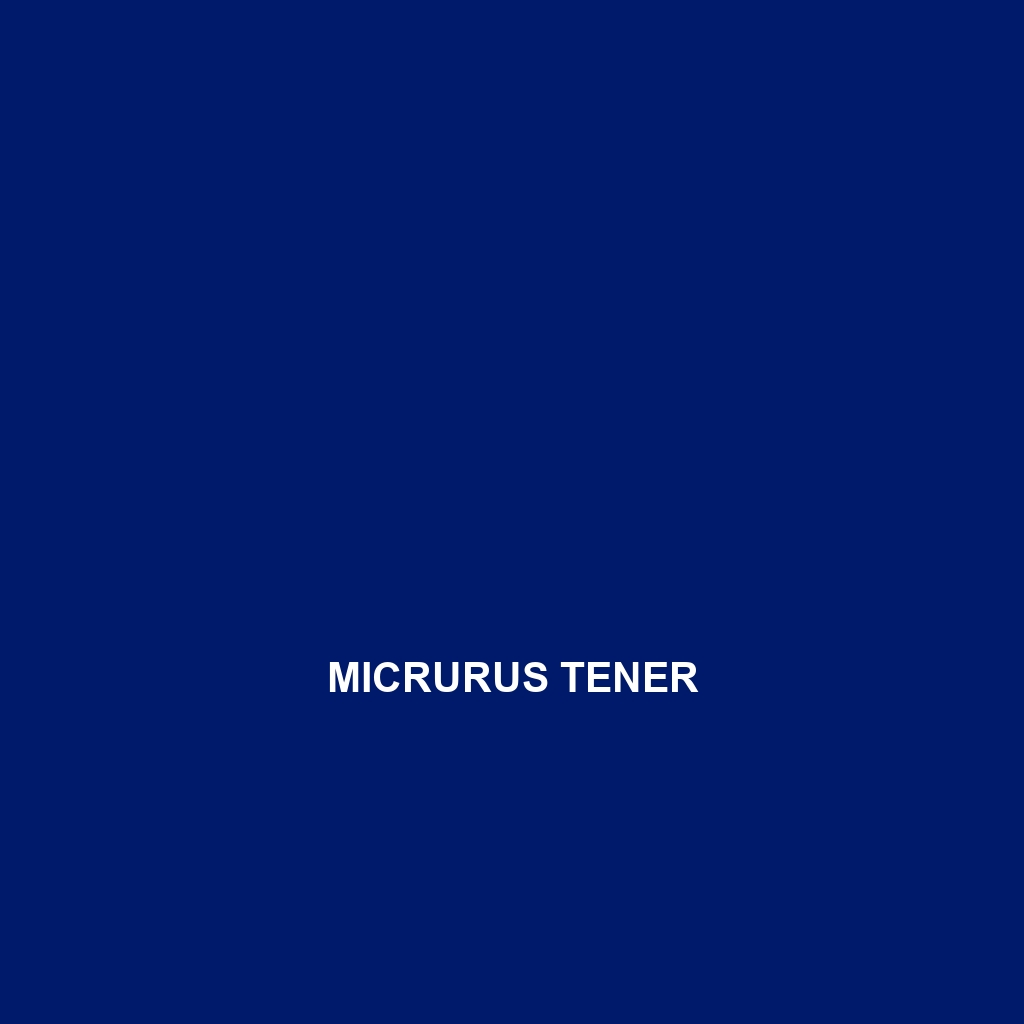Common Name
Micrurus tener
Scientific Name
Micrurus tener
Habitat
Micrurus tener, commonly known as the eastern coral snake, primarily inhabits a variety of ecosystems across its range, including tropical rainforests, savannas, and temperate forests. This species is predominantly found in the lowland regions of southeastern United States, Mexico, and parts of Central America. Preferred habitats are often characterized by sandy soils and dense leaf litter. These environments offer ample cover and resources, which are essential for their survival. During the warmer months, Micrurus tener can also be spotted in marine habitats along coastal areas where they hunt for prey. The climate in these regions is generally humid, which fosters the lush vegetation that is necessary for their survival.
Physical Characteristics
Micrurus tener is a small to medium-sized snake, typically ranging from 45 to 84 cm (18 to 33 inches) in length. Its distinctive appearance includes a slender body and an unmistakable pattern of bright red, black, and yellow or white bands. The coloration provides a warning to predators—a phenomenon known as aposematism—indicating that this snake is venomous. The head of the Micrurus tener is small and distinct, often with a slightly enlarged scale at the top. Unique among its family, the Micrurus tener exhibits a more subdued coloration in certain regions, adapting to different environmental conditions.
Behavior
Typically, Micrurus tener exhibits a reclusive nature. They are mainly nocturnal, preferring to hunt for food during the night when temperatures are cooler. This nocturnal behavior aids in avoiding predation and conserving moisture. Social interactions among these snakes are generally limited, as they are solitary creatures. However, during the mating season, males may engage in complex displays of behavior, including combat dances to attract females. These displays not only highlight the physical prowess of the males but also establish dominance within the area.
Diet
Micrurus tener is a carnivore that primarily feeds on other snakes and lizards, with a particular preference for smaller species. Its diet also includes amphibians such as frogs. The snake’s venom, which is neurotoxic, allows it to immobilize its prey quickly. The feeding patterns of this species demonstrate adaptability; they often hunt in the leaf litter, using their keen sense of smell to locate prey. Interestingly, their feeding habits help control the populations of their prey species, contributing to the ecological balance in their habitats.
Reproduction
The reproductive cycle of Micrurus tener occurs typically in the spring and early summer months. Mating rituals involve males performing courtship displays to entice females, which may include scent marking and elaborate movements. After mating, females lay clutches of approximately 4 to 11 eggs, which are deposited in hidden locations to protect them from predators. The incubation period lasts around 60 to 70 days, after which the young emerge fully formed and independent. Parents do not exhibit any form of parental care post-hatching, entrusting the young with their innate survival instincts.
Conservation Status
As of the latest assessments, Micrurus tener is classified as having a conservation status of ‘Least Concern’ by the International Union for Conservation of Nature (IUCN). However, habitat loss due to urban development and agricultural expansion poses ongoing threats to its populations. Conservation efforts focused on habitat preservation and public education are vital to ensure that this species remains a stable part of its ecosystems. Additionally, awareness of the importance of venomous snakes in controlling pest populations is critical for fostering coexistence between humans and wildlife.
Interesting Facts
One fascinating aspect of Micrurus tener is its neurotoxic venom, which is highly potent but rarely fatal to humans. In fact, very few bites occur, as this snake prefers to avoid interaction. Herpetologists note that coral snakes, including Micrurus tener, possess a unique method of injection with their fangs, enabling them to deliver venom efficiently into their prey. Another intriguing fact is that these snakes can be difficult to spot due to their effective camouflage against the forest floor, making their observation a rare and thrilling event for wildlife enthusiasts.
Role in Ecosystem
Micrurus tener plays a crucial role in maintaining the health of its ecosystem. As a predator, it helps regulate populations of other snake species and small vertebrates, ensuring a balanced food web. By preying on potentially harmful animals, such as rodents and certain lizards, this snake contributes to controlling pest populations. Moreover, its role as a prey species for larger predators illustrates its importance in the food chain. Ensuring the continued existence of Micrurus tener is vital for preserving the biodiversity of the ecosystems in which it resides.
